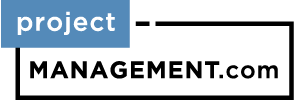In the past five years, the project management industry has seen significant growth in terms of job opportunities. Northeastern University reports that “as of 2017, 71% of global organizations have a project management office (PMO).”
By 2027, it is estimated that there will be another 22 million jobs added to the project management sector. As individuals look to reimagine their careers and work, there are many opportunities to do so in the world of project management.
Read more: PMO Meaning & Top Examples 2022 | project-management.com
Where to Start
Project management has historically been a field heavily focused on construction, IT, and engineering; however, over the past decade, there has been significant growth in project management across industries.
As organizations focus on maximizing returns and efficiencies, increasing fiduciary responsibility, and implementing innovative products and services, opportunities for project managers (PMs) can be found in most organizations and industries. Determining where to start should be a two-pronged approach to leverage some of your past experience and subject matter expertise in addition to industry outlooks and forecasts.
As a new PM, you will likely find that the easiest field to get into is a field where you already have subject matter expertise to leverage along with an industry certification, like the Project Management Professional (PMP) and/or Certified Scrum Master certification.
A challenge for hiring managers is that they often prefer to hire a PM with subject matter expertise (SME). The reasoning behind this is so that the new PM can more easily transition into a new field rather than starting as an entry-level hire. However, recent studies are showing that it’s becoming more difficult to bridge the gap with qualified PMs.
In PMI’s Job Growth and Talent Gap in Project Management 2017 report, the article projects that between 2017 and 2027 there will be a PM gap in six sectors: manufacturing and construction, information services and publishing, finance and insurance, management and professional services, utilities, and oil and gas.
6 Tips for Becoming a Go-To Project Manager
Determining where you want to start your career as a PM and getting certified are two very good first steps; however, being a strong project manager is not something that a certification or subject matter expertise will make you.
Becoming a go-to project manager is about how you implement and leverage the skills and expertise you bring. Starting with a few key strategies will put you on a path to becoming an effective PM in your organization.
1. Keep yourself, the team, and the project organized
Organization is key for project management. There are many balls and tasks to keep on track, and it doesn’t just happen. To keep yourself, the team, and the project organized, start with the following:
Organized Collaboration Site
Establish a site where you can collaborate effectively with your team. This is a great way to manage and update requirements and documentation, maintain version control, and remove you and other team members as bottlenecks for information.
The larger the team, departments, and partner organizations, the more important this becomes. In a time where many organizations have seen heavy attrition related to the Great Resignation, this will also be key in terms of having the project knowledge available and stored.
Weekly Project Schedule and Milestone Chart
Updating and sharing a weekly project schedule and milestone chart will help to ensure the team is meeting the project needs. Keep it simple. Hide completed tasks, and take a few minutes at the beginning of your standard meetings to review the hot items of the week.
However, be careful not to over-communicate responsibilities. The goal is more about ensuring tasks and goals are acknowledged and understood versus being known. In addition, the Milestone Chart will be an easier read for someone that may be intimidated by the many lines of a project schedule.
Tool to Track Actions
No matter how great your memory may be, it’s always best to incorporate a planning tool into your project management process. Some planning tools even offer capabilities for assigning actions to team members and providing automatic reminders until the task is complete. Some tools may also give you, as the PM, on-demand insight into task status. This will help you to put time back into other areas.
2. Look ahead
Never look just a week or two down the line in project planning. Always keep a big-picture view of the entire project timeline and understand the impacts of the tasks. When issues come up, they will likely be things that you would have seen coming weeks in advance—if you were looking. In terms of weekly planning, plan about four weeks ahead. Keep your team mindful of that four-week outlook as well.
3. Be risk-aware and solution-focused
Always perform initial risk planning as well as ongoing monthly risk reviews. During meetings, maintain a risk-critical posture and think through the project activities with a questioning mindset of risks and implications. Having that mental perspective will keep you on alert and always questioning if there is a risk.
When risks are present, be the PM that supports solutions. Using your past experience and knowledge, work with your business sponsor to propose some solutions for consideration. This is where you can add great value.
4. Be a project executor
Basic project management tracks actions, schedules, tasks, and risks and supports coordination, but there’s more to the role of a PM. A project manager drives the team toward project completion. They focus on strong follow-up and follow-through. In addition to finding project pain points, a project manager lends their experience on how to approach issues and how to optimize the work, and ultimately, they play a key role in supporting solutions.
5. Actively manage vendors
Vendors can be more difficult to manage because they are not in your organization and do not share the same reporting lines. Implement a solid approach for managing vendors to ensure weekly meetings and updates, post-meeting notes and action items, and early reviews of client deliverables are planned.
6. Be honest and transparent
When projects or milestones are not green or proceeding on time and within budget, report them as yellow or red according to the standard definitions of your organization.
Work with the project team to understand why their work is off track, and brainstorm how to support the team. Project team members will respect your honesty, and even more, stakeholders will appreciate knowing they can depend on you to provide the real “story.”
Evolving as a PM: An Ongoing Journey
For PMP-certified project managers, ongoing education is required—and for good reason. The sector is always evolving, and the application of project management across industries can be nuanced as well.
The best way to remain not just current but best-in-class is to remain armed with the awareness of the span of challenges that could present themselves along with a variety of approaches and innovative solutions to mitigate them. You may even need a sounding board from time to time. Network with other PMs—whether on LinkedIn, PMI.org, or some other venue. Share, connect, and give back to the industry, and it will give back to you.












